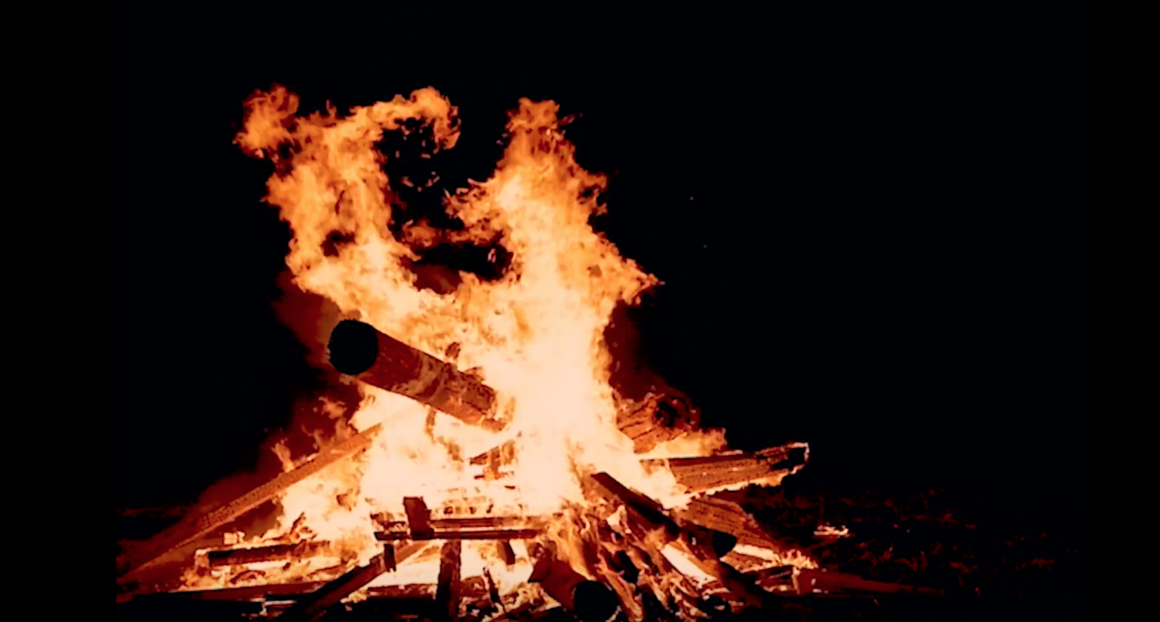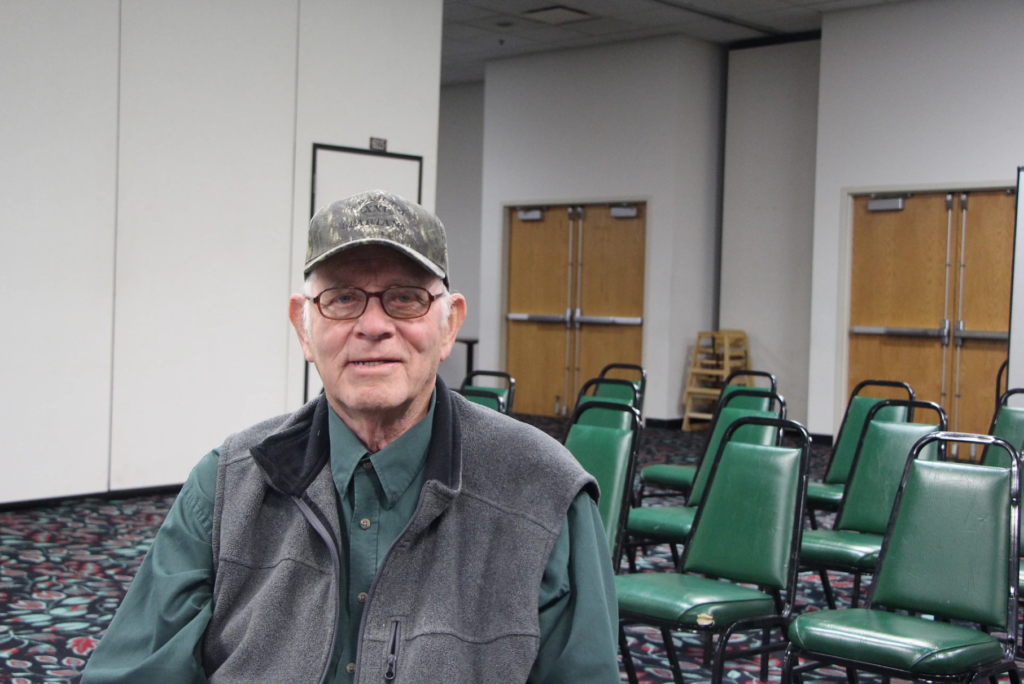
Climate change threatens sacred wild rice in the wetlands of the Northern Great Lakes. It’s something the Ojibwe prophesied.
In the wetlands of the Northern Great Lakes, the sacred grows on the water. Centuries ago, wild rice growing in watersheds and along slow moving rivers in the region marked the final home of a migrating people. The Ojibwe, who often call themselves the Anishinaabe or the “true people,” followed a prophecy from the Atlantic coast to the Great Lakes, and have harvested manoomin (wild rice) in the late summer ever since.
Now, climate change threatens the survival of the crop in their ancient homelands of Northern Wisconsin.
Warmer winters, disease, and floods have caused entire crops of rice to fail in the last decade along Bad River and in watersheds along Lake Superior. For the people who have always relied on it for physical and spiritual sustenance, the loss of this sacred rice reflects the loss of wild places all over the world.
“I’ve been hearing these stories since I was a kid” said Joe Rose, looking into the middle distance. Rose is a Bad River Ojibwe elder, professor emeritus and former director of Native American Studies at Northland College for forty years. He’s an environmental scientist and an Ojibwe storyteller.
In an unused conference room at the Bad River reservation lodge, Rose passed a Styrofoam cup of coffee from one weathered hand to the other, and told me about a prophecy that has guided the Ojibwe for hundreds of years. He told the story of the Seventh Fire.

The dreams of eight prophets some 500 years ago revealed the Ojibwe journey from the Atlantic coast through the centuries to their current moment in history. These dreams told of Seven Fires or epochs in the story of the Ojibwe. The first three prophets compelled a migration from the east coast, and provided stopping places along the way to their final stopping place. That place would be marked by a sign, it would be “where food grows on the water.” This is the link between the Anishinaabe and wild rice—it signified their final destination—their home.
The next three fires foretold the arrival of French with whom the Ojibwe traded and became more powerful, and then the rise of the United States and its anti-native policies. As the United States grew and pushed westward, the Ojibwe were forced to cede territory, their religion was outlawed, an attempt to forcibly relocate them resulted in the death of 400 Ojibwe in the Sandy Lake Tragedy, also known as the Wisconsin Death March, and eventually 19th century boarding schools would strip their children of their tribal identities. Later epochs foretell the power and devastation the white invaders would have over not just native land and lives, but also on the future of the human race itself.
And then there was the Seventh Fire.
This is the link between the Anishinaabe and wild rice—it signified their final destination—their home. Click To Tweet“We are in the eleventh hour of a very serious environmental crisis,” Rose said. He placed the coffee cup on the table and leaned forward. He swept his hand over the table and outlined two roads diverging. “And that is where we are, at the fork in the road.”
Down one road, was the Eighth Fire, a peaceful final world. Down the other, was catastrophe.
“It was prophesied that in the age of the Seventh Fire, a new people would arise and retrace their footsteps and learn the way of the ancestors,” Rose said. “If Ma’iingan (the wolf) no longer has a place to retreat, if there is no wilderness, Ma’iingan will soon pass out of existence. Then soon after, the Anishinaabe will pass out of existence. And then so too will all of humankind.”
![]()
Bad River, Wisconsin, winds along a stretch of Highway 2, deep in the forests of Northern Wisconsin. Tall, thin pine trees and bone-white birches crowd in from just beyond the road, and a view of Lake Superior slices through them, only a few weeks free from its partial blanket of ice. Snow still hides in the forest on the shadowy side of the road in mid-May. With snow melt, Bad River ran swollen and fast through the reservation.
In June, wild rice begins to grow, floating and fragile where water moves slowly, spawning from winter dormancy in the wetlands. But there’s no telling if it will be healthy enough to make it to the end of the season with the flash floods and hot spells of a warming planet.
There have always been good and bad years for wild rice. Peter David from Wisconsin’s Great Lakes Indian Fish and Wildlife Commission (GLFWIC) knows you can expect to have a thin harvest every four years or so. But in the past eight years, the crop has failed as many times as it’s been successful.
Twice, a brown-spot fungus broke out and swept the entire region. The crop couldn’t germinate and respawn the following year; no rice grew at all. In 2016, a massive flood that took out part of Highway 2 and stranded residents without power for four days also wiped out the wild rice.
In GLFWIC’s office, Peter and his wife Lisa, showed me photos of the rice beds on possibly the oldest laptop still in use, with a handle on the top to serve as its own briefcase. In a healthy year, almost all the water in Dean Lake is carpeted in a verdant green. But then the next year, the same lake isa sickly pale brown. It’s the fungus. The entire crop is dead. He clicks on the next photo of a blue lake. There is no rice at all.
By his estimation, there isn’t much long-term hope for rice in the region. And when the rice fails, the ecosystem ripples with the effects. The rice beds don’t just supply the Ojibwe with a sacred and vital source of food, but they also serve as a habitat for countless species, from the muskrat to the moose. Migrating swans, geese, and ducks rely on the rice beds for cover and food along their journeys.
As the climate warms, wild rice may continue to survive farther north, moving into Canada where the winters will continue to be cold. Attempts to save the wild rice are also complicated by the sacredness of the plant itself. David explained that genetic mutation or otherwise altering wild rice to make it more durable in warmer climates isn’t an option because of the importance rice holds for the Ojibwe and their migration story.
“That doesn’t help anyone in Bad River,” David said.
![]()
Joe Rose grew up ricing in the late summers in the Kakagon Sloughs, processing it the traditional way: drying, parching, hulling, and winnowing the rice all by hand. The first time I met him, he was coming back from three days of sapping maple sugar in the bush, just like his grandparents taught him when he was young.
His relationship to the reservation and the traditions of the Ojibwe informed his environmental activism. Anishinaabe teachings rely on the balance between the human world and the natural, represented by the wolf, or ma’iingan. Ma’iingan’s territory is ever-shrinking due to the influence of humanity and the Anishinaabe have long fought to retain the wild places.
By his estimation, there isn’t much long-term hope for rice in the region. Click To TweetRose organized and spoke out against potential mining operations and toxic waste dumps that could harm the local ecosystem. In 2012, Bad River helped beat a proposed open-pit iron-ore mine in the neighboring Iron County. Runoff from the mine would have threatened the rice. But non-native members of the neighboring Iron County—eager for the mining jobs—struggled to see the significance of the plant, Rose said.
Mary Annette Pember wrote in Indian Country Today about an incident during a tribal presentation on the importance of wild rice at a county board meeting. A county board member interrupted the presentation to ask what economic value wild rice had to the region.
“All the white man thinks about is money,” Rose remarked afterward.
While the Ojibwe continued to fight environmental threats to Bad River, the United States emitted roughly 15 trillion pounds of greenhouse gases annually, and the fossil fuel industry grew to be worth over $5 trillion. All the while, global temperatures continue to rise.
“We’ve been successful in fighting these attempts to harm the land,” Rose said. But the threats to wild rice due to climate change don’t come from one industrial source the tribe can rally against – it comes from all industrialized areas of the globe The tribe has had to go to extreme measures just to try and keep wild rice alive in the region. A hot dry summer can prove deadly. “In 2007, the Lake Superior level was about two feet lower than normal, and the rice was sitting in mudflats rather than floating. So for the first time in history, the tribal council closed the sloughs to ricing. And then it happened again.”
Non-native members of the neighboring Iron County—eager for the mining jobs—struggled to see the significance of the plant Click To TweetThe flooding poses another deadly threat. In the summer of 2016, when the wild rice was beginning to form roots to attach itself to the bottom of lakes and rivers, a massive storm hit. Ten inches of rain flooded the river, the highway, and the homes and workplaces on the reservation, destroying ten homes completely. It took four days for power to return to the area. It cut off the tribe from normally routed supplies of food, water, and medicine. The storm affected a huge part of northern Wisconsin, leaving three people dead.
The tribe once again closed the sloughs to ricing as so little of the plant survived the flooding.
The World Resources Institute explained that climate change will cause a greater number of extreme weather events, including heat waves, storms, droughts and wildfires. The Great Lakes themselves are warming, which creates a problem for an entire ecosystem built for long winters. Earlier retreats of lake ice could not only devastate the rice, but nearly every part of the region’s wildlife.
![]()
Bad River isn’t the only native community under threat. These threats are made more pressing by the current administration’s attitude towards climate change. By removing the U.S. from the international Paris climate accord and encouraging a “Second Renaissance” of oil and gas sector expansion, the Trump administration is backing away from the critical global goal scientists have set to stay within two degrees of warming.
Native American environmentalism has long led movements against mining, drilling, and pollution, with the Dakota Access Pipeline multi-tribal protest just a recent example of a long history of activism. Four tribal nations, including the Quinault, even announced an intention to follow the Paris agreement. Native traditional relationships between people and the natural, wild world has influenced the larger environmentalism movement. And for the Ojibwe, that looking backward was prophesied all along.
The choice of which path to take, the Eighth Fire or annihilation, isn’t just for the Ojibwe to make—the Seventh Fire specifies that it will be the “light-skinned race,” the same people who caused the destruction of the environment, who will be the ones to determine the fate of the world.
Sacred wild rice is withering and dying in the changing climate at Bad River, but stories like this are unfolding in every place on earth where the people live close enough to the land for the impact to be unavoidable. And while Rose still retains hope, the time to make this choice is now. According to Rose, we entered into the age of the Seventh Fire several decades ago, and our window is closing.
“So,” Rose said, placing his hands flat on the table. “Wild rice is only symbolic of what could happen to everything.”

